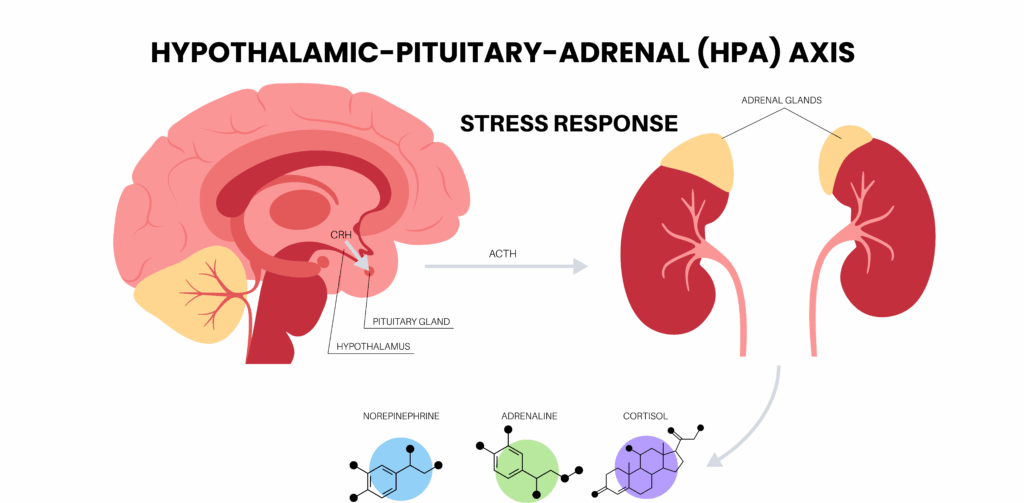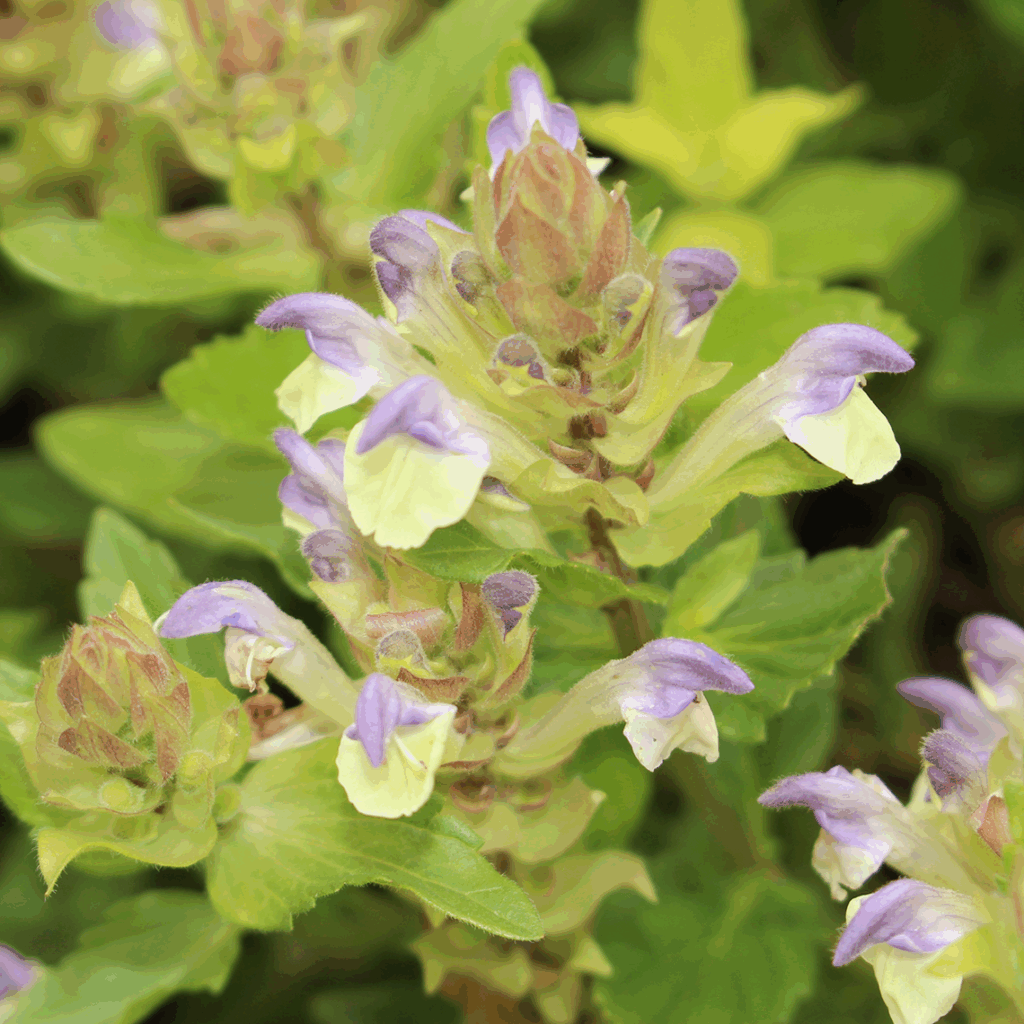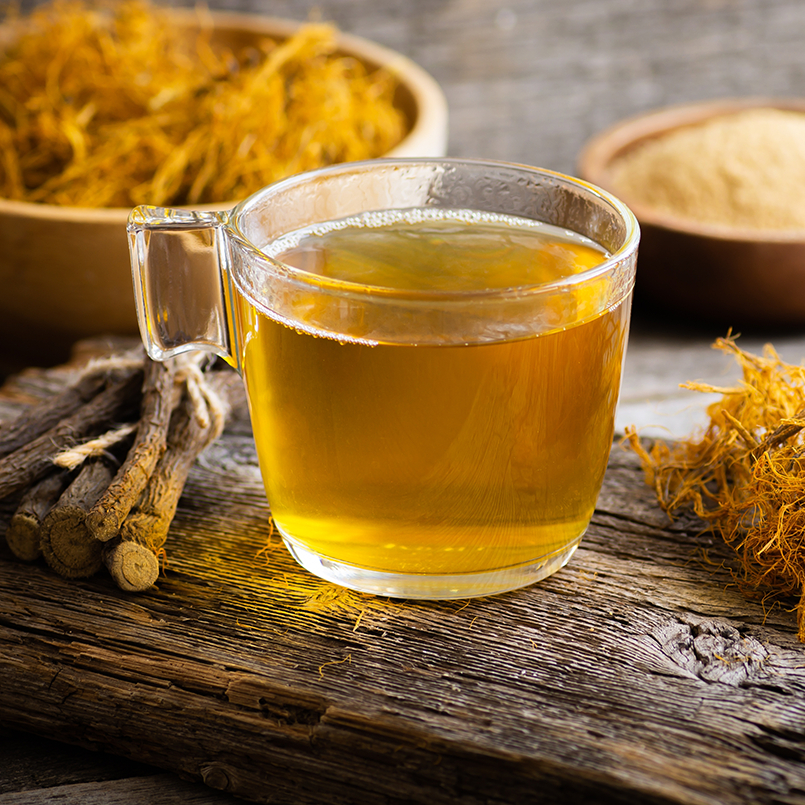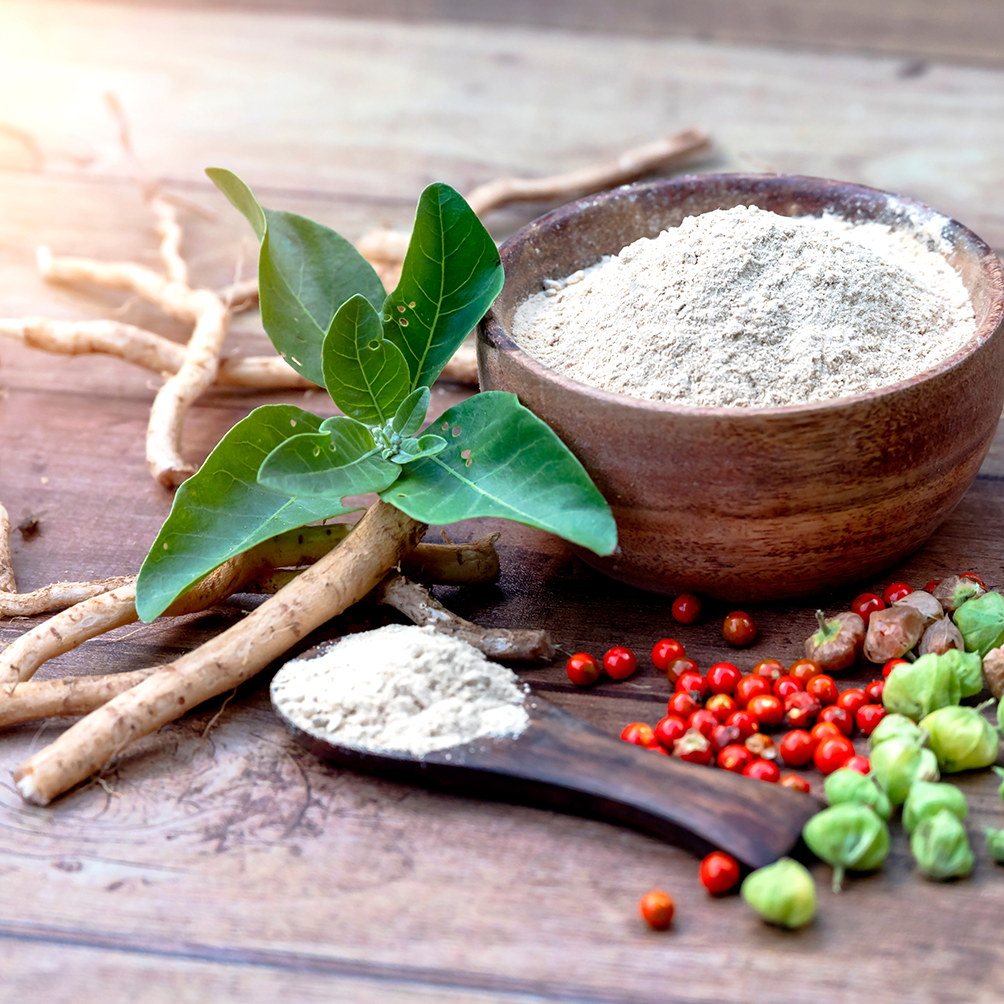The Role of Adaptogens and Nervines in Stress Recovery
Physiology Meets Phytotherapy
Any stressful situation, whether it is a family emergency, the deadline for a project, fear about losing a job, worry about not paying the bills on time, can trigger a cascade of signals in the body that release specific hormones that cause physiological changes in the body. This is known as the “fight” or “flight” response. These changes can manifest as a rapid heartbeat, sweat, tense muscles, headache, digestive problems, elevated body temperature, and more. Stress is the response to a real or perceived threat that disrupts the body’s homeostasis. The acute stress response is essential for survival, however, when the acute stress response is not shut off, there can be significant long-term health ramifications. As this acute response becomes prolonged, stress shifts from an adaptive reaction to a chronic condition.
Chronic Stress and the HPA Axis
Chronic stress occurs when there is prolonged exposure to stressful situations. This can be caused by long-term issues such as health problems, relationship issues, and problems at work. Overstimulation from technology and smart phones also contributes significantly to the overall increase in the experience of stress.
Anxiety disorders have seen an 18.2% increase from 1990 to 2021 globally.1 Following Covid, over half of the population experienced emotional stress in 20 countries, and 85% of the countries reported worse psychological stress in 2020 compared with 2008.2 Chronic stress over time can wreak havoc in the body on your neurological health, hormone balance, and physical and mental health. Over time, this chronic stress can lead to Hypothalamic-Pituitary-Adrenal (HPA) axis dysfunction.
The HPA axis consists of:
- Hypothalamus – the part of the brain responsible for regulating temperature, hunger mood, and more. It influences the autonomic nervous system and manages hormones.
- Pituitary gland – small gland located on the base of the brain below the hypothalamus. It makes essential hormones needed for the body and regulates other endocrine glands.
- Adrenal glands – small triangular shaped glands on the top of each kidney. They produce hormones like cortisol, aldosterone, and androgens that regulate blood pressure, stress response, metabolism, immune system, and sexual health. The adrenal glands also produce Epinephrine (the hormone that prepares the body for the flight or fight response) and norepinephrine.

Cortisol
Cortisol is a steroid hormone produced by the adrenals that is crucial to survival. It helps the body respond to stress, regulate blood sugar, metabolism, hormone regulation, and maintain blood pressure. The body is constantly producing, in varying concentrations throughout a 24-hour cycle. Typically, it is produced in higher amounts or stays elevated in those with a heightened fight/flight response.
When cortisol levels rise significantly, it signals the hypothalamus to reduce the release of corticotrophin releasing hormone (CRH), which then leads to decreased ACTH production by the pituitary gland. High cortisol can inhibit and decrease production of other hormones like estrogen and progesterone which can lead to menstrual irregularities.
Naturally cortisol levels should fluctuate throughout the day, being higher in the mornings and lower in the evenings. In the evenings, the body will produce melatonin and decrease cortisol production to facilitate a more restful state. In cases of chronic stress, cortisol can stay elevated for longer periods of time, and its patterns become more irregular.
Herbal Remedies for Chronic Stress
Given these physiological consequences, addressing chronic stress requires interventions that support both the nervous system and endocrine system. Herbal medicine can provide tremendous relief for those that experience acute or chronic stress. Numerous herbs have been utilized traditionally and effectively for managing both stress and anxiety. Herbs can be broken down into multiple therapeutic areas.
Adaptogens
Adaptogens, a term coined in the 1940’s, improve the body’s non-specific resistance to stress.3 Adaptogens accomplish this through their abilities to reduce oxidative stress, protect the mitochondria, normalize cortisol levels, and by regulating the HPA axis. Several adaptogens, including astragalus (Astragalus membranaceous), ashwagandha (Withania somniferum), licorice (Glycyrrhiza glabra), and rhodiola (Rhodiola rosea), have a long history of use in traditional herbal medicine for improving resilience to chronic stress, and have been shown in modern research to address multiple aspects of the stress response and more.
Nervines
Nervines are a category of plants that help to support the nervous system by relieving stress and helping to promote relaxation.4 Nervines, including lavender (Lavandula), skullcap (Scutellaria lateriflora), passionflower (Passiflora) and valerian (Valeriana officinalis) are plants that help to support the nervous system by relieving stress and promoting relaxation. Nervines are commonly used in conjunction with adaptogens due to the overlapping benefits. These work by acting on the central nervous system and peripheral nervous system to help improve overall resilience to stress.5 Nervines are categorized by nervine tonics, nervine relaxants, and nervine stimulants. Nervines typically have a fast-acting effect on the nervous system, making them more appropriate for addressing acute stress, while adaptogens work at a deeper level to support nervous system homeostasis.
Nervine Spotlight on Skullcap

Within these categories, several herbs stand out for their synergistic potential. Skullcap (Scutellaria Lateriflora), commonly known as “blue skullcap” and “American skullcap” is hardy perennial herb that belongs to the mint family (Lamiaceae), and is native to North America. Its traditional uses dates to the Indigenous people of North America who traditionally consumed it as a tea to help soothe nerves, as a sedative, and anticonvulsant.6 Today in western herbal medicine, skullcap is utilized to help relieve nervous tension, anxiety, combat insomnia, neuralgia, and epilepsy.7
Skullcap aerial parts consist of phytochemicals like flavonoids, glycosides, cinnamic acid and caffeic acid.6 Skullcap acts as a nervine tonic, spasmolytic and in higher doses, a sedative. It can have restorative effects on the nerves, physically and mentally/emotionally. One study summarized key findings of a significant sleep-wake balance improvement when supplemented with Skullcap in a controlled, randomized, crossover double blind clinical trial.8
Adaptogenic Actions of Licorice

Transitioning from nervines to adaptogens, licorice root is an adaptogen that has historically been used forbronchitis, throat infections, liver diseases, gastritis, peptic ulcerations, and adrenal insufficiency.7,9 It has a long history of use in traditional Asia and European herbal medicine and has since been commercially grown all over the world due to its multitude of uses in food, cosmetics, and pharmaceuticals.10
Transitioning from nervines to adaptogens, licorice root is an adaptogen that has historically been used forbronchitis, throat infections, liver diseases, gastritis, peptic ulcerations, and adrenal insufficiency.7,9 It has a long history of use in traditional Asia and European herbal medicine and has since been commercially grown all over the world due to its multitude of uses in food, cosmetics, and pharmaceuticals.10
Licorice’s main medicinal properties act as an anti-inflammatory, expectorant, demulcent, anti-microbial, and adrenal tonic. Licorice’s main key constituents consist of: saponins, glycyrrhizin (glycyrrhizic acid) present in the form of potassium and calcium salts and flavonoids.7 In animal models, licorice root was studied and noted to reduce anxiety and fear in post-traumatic stress disorder subjects.11 Glycyrrhizin from licorice root has been shown to contain antioxidant, anti-inflammatory, and immune regulatory actions.12
Adaptogen Spotlight on Ashwagandha

Another cornerstone adaptogen, ashwagandha, has a long historical use as an adaptogen to strengthen the nervous system and combat stress. Ashwagandha holds therapeutic properties as a mild sedative, anti-inflammatory, immune modulating, neuroprotective, and anti-microbial.13 Its medicinal uses trace back to Indian medicine over 3,000 years ago.14 Traditionally, it has been used as an aphrodisiac, narcotic, tonic, diuretic, anthelmintic, and stimulant. It is naturally native in India but due to its current widespread popularity, it is now grown in many parts of the world.15
Another cornerstone adaptogen, ashwagandha, has a long historical use as an adaptogen to strengthen the nervous system and combat stress. Ashwagandha holds therapeutic properties as a mild sedative, anti-inflammatory, immune modulating, neuroprotective, and anti-microbial.13 Its medicinal uses trace back to Indian medicine over 3,000 years ago.14 Traditionally, it has been used as an aphrodisiac, narcotic, tonic, diuretic, anthelmintic, and stimulant. It is naturally native in India but due to its current widespread popularity, it is now grown in many parts of the world.15
Ashwagandha contains withanolides, alkaloids, and flavonoids.13 A recent study displayed that ashwagandha root extract may help improve sleep quality and sleep onset latency in patients with insomnia.16 Multiple studies have found that standardized ashwagandha root extracts reduce perceived stress, anxiety and lower cortisol when compared to placebos.16-18 Recent trials have shown improvements in endurance, strength and recovery in healthy adults and athletes using specific ashwagandha extract formulations. 19
Korean Ginseng as Adaptogen and Tonic Herb

Korean ginseng has been traditionally used for athletic and psychomotor performances, depression, and sexual function.7 Its main actions include: adaptogenic, tonic, immune modulating, cardiotonic, male tonic, cancer preventative, and cognition enhancing.7 The key constituents of ginseng include a complex mixture of saponins, ginsenosides, oleanolic saponin, polysaccharides, and essential oils.
Korean ginseng has been traditionally used for athletic and psychomotor performances, depression, and sexual function.7 Its main actions include: adaptogenic, tonic, immune modulating, cardiotonic, male tonic, cancer preventative, and cognition enhancing.7 The key constituents of ginseng include a complex mixture of saponins, ginsenosides, oleanolic saponin, polysaccharides, and essential oils.
Ginsenosides, the main phytochemical of ginseng, has been studied for its anti-inflammatory and antioxidant properties in cell and animal models by modulating NF-kB and JAK/STAT pathways.20 Several small, randomized controlled trials found modest improvements in attention and working memory.21 Additional studies have been conducted to study ginseng and its role in fatigue, physical performance, and its cardiometabolic effects.22,23
Clinical Takeaways
Chronic stress represents one of the most pervasive disruptors of physiological balance, influencing the HPA axis, hormone regulation, and overall neurological resilience. A combination of nervines and adaptogens offers a powerful therapeutic strategy. Nervines such as skullcap provide rapid relief of nervous tension, calming the hyperactive sympathetic response and promoting relaxation, while adaptogens like Ashwagandha, licorice root, and Korean ginseng, work more deeply to restore HPA axis function, regulate cortisol, and build long-term resilience to stress.
In a clinical setting, this synergistic partnership allows for both immediate soothing of the nervous system and gradual rebalancing of hormonal and metabolic function. Together, these herbs bridge acute symptom relief with long-term adaptation, offering a holistic, evidence-informed approach to managing modern stress in all its physiological and psychological challenges.
Did you know WholisticMatters is powered by Standard Process? Learn more about Standard Process’ whole food-based nutrition philosophy.
- Wu Y, Li X, Ji X, et al. Trends in the epidemiology of anxiety disorders from 1990 to 2021: A global, regional, and national analysis with a focus on the sociodemographic index. Journal of Affective Disorders. 2025/03/15;373doi:10.1016/j.jad.2024.12.086
- Piao X, Xie J, Managi S. Continuous worsening of population emotional stress globally: universality and variations. BMC Public Health. 2024 Dec 23;24(1)doi:10.1186/s12889-024-20961-4
- V T, K I, C D, V N, D K-B, S I. Plant Adaptogens-History and Future Perspectives – PubMed. Nutrients. 08/20/2021;13(8)doi:10.3390/nu13082861
- A P, G W. Effects of Adaptogens on the Central Nervous System and the Molecular Mechanisms Associated with Their Stress-Protective Activity – PubMed. Pharmaceuticals (Basel, Switzerland). 01/19/2010;3(1)doi:10.3390/ph3010188
- Burns J. Common herbs for stress: The science and strategy of a botanical medicine approach to self-care. Journal of Interprofessional Education & Practice. 2022 Dec 10;30doi:10.1016/j.xjep.2022.100592
- Z Z, XY L, S L, JL S. Characterization of chemical ingredients and anticonvulsant activity of American skullcap (Scutellaria lateriflora) – PubMed. Phytomedicine : international journal of phytotherapy and phytopharmacology. 2009 May;16(5)doi:10.1016/j.phymed.2008.07.011
- Mills S, Bone K. The essential guide to herbal safety. Herbal safety. Elsevier Churchill Livingstone; 2005.
- Minno AD, Morone MV, Buccato DG, et al. Efficacy and Tolerability of a Chemically Characterized Scutellaria lateriflora L. Extract-Based Food Supplement for Sleep Management: A Single-Center, Controlled, Randomized, Crossover, Double-Blind Clinical Trial. Nutrients 2025, Vol 17,. 2025–04–28;17(9)doi:10.3390/nu17091491
- Wahab S, Annadurai S, Abullais SS, et al. Glycyrrhiza glabra (Licorice): A Comprehensive Review on Its Phytochemistry, Biological Activities, Clinical Evidence and Toxicology. Plants. 2021 Dec 14;10(12)doi:10.3390/plants10122751
- Fenwick GR, Lutomski J, Nieman C. Liquorice, Glycyrrhiza glabra L.—Composition, uses and analysis. Food Chemistry. 1990/01/01;38(2)doi:10.1016/0308-8146(90)90159-2
- S L, L S, Z J, Z L. Glycyrrhizin treatment ameliorates post-traumatic stress disorder-like behaviours and restores circadian oscillation of intracranial serotonin – PubMed. Clinical and experimental pharmacology & physiology. 2020 Jan;47(1)doi:10.1111/1440-1681.13173
- Sabbadin C, Bordin L, Donà G, Manso J, Avruscio G, Armanini D. Licorice: From Pseudohyperaldosteronism to Therapeutic Uses. Frontiers in Endocrinology. 2019 Jul 18;10doi:10.3389/fendo.2019.00484
- Mikulska P, Malinowska M, Ignacyk M, et al. Ashwagandha (Withania somnifera)—Current Research on the Health-Promoting Activities: A Narrative Review. Pharmaceutics. 2023 Mar 24;15(4)doi:10.3390/pharmaceutics15041057
- Singh N, Bhalla M, Jager Pd, Gilca M. An Overview on Ashwagandha: A Rasayana (Rejuvenator) of Ayurveda. African Journal of Traditional, Complementary, and Alternative Medicines. 2011 Jul 3;8(5 Suppl)doi:10.4314/ajtcam.v8i5S.9
- Langade D, Kanchi S, Salve J, Debnath K, Ambegaokar D. Efficacy and Safety of Ashwagandha (Withania somnifera) Root Extract in Insomnia and Anxiety: A Double-blind, Randomized, Placebo-controlled Study. Cureus. 2019 Sep 28;11(9)doi:10.7759/cureus.5797
- Lopresti AL, Smith SJ. Ashwagandha (Withania somnifera) for the treatment and enhancement of mental and physical conditions: A systematic review of human trials. Journal of Herbal Medicine. 2021/08/01;28doi:10.1016/j.hermed.2021.100434
- A R, K C, T O, et al. Efficacy of Withania somnifera supplementation on adult’s cognition and mood – PubMed. Journal of Ayurveda and integrative medicine. 2022 Apr–Jun;13(2)doi:10.1016/j.jaim.2021.08.003
- K G, S T, V S, TSS R, VB T, S C. Efficacy and Safety of Ashwagandha Root Extract on Cognitive Functions in Healthy, Stressed Adults: A Randomized, Double-Blind, Placebo-Controlled Study – PubMed. Evidence-based complementary and alternative medicine : eCAM. 11/30/2021;2021doi:10.1155/2021/8254344
- Guo S, Rezaei MJ. Frontiers | The benefits of ashwagandha (Withania somnifera) supplements on brain function and sports performance. Frontiers in Nutrition. 2024/08/02;11doi:10.3389/fnut.2024.1439294
- Yu X, Lu Y, Chen J, Deng Y, Liu H. Unlocking ginsenosides’ therapeutic power with polymer-based delivery systems: current applications and future perspectives. Frontiers in Pharmacology. 2025 Jul 10;16doi:10.3389/fphar.2025.1629803
- Lee R, Kim J-H, Kim W-W, et al. Emerging evidence that ginseng components improve cognition in subjective memory impairment, mild cognitive impairment, and early Alzheimer’s disease dementia. Journal of Ginseng Research. 2024 Feb 17;48(3)doi:10.1016/j.jgr.2024.02.002
- Li Z, Wang Y, Xu Q, et al. Frontiers | Ginseng and health outcomes: an umbrella review. Frontiers in Pharmacology. 2023/07/03;14doi:10.3389/fphar.2023.1069268
- A J, K K, H M, et al. Ginseng supplementation and cardiovascular disease risk factors: a protocol for GRADE-assessed systematic review and dose-response meta-analysis – PubMed. BMJ open. 07/05/2024;14(7)doi:10.1136/bmjopen-2023-080926




